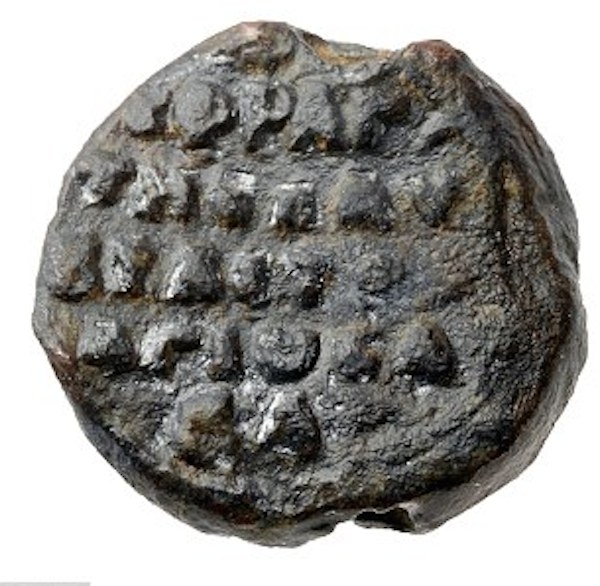Rare Seal of St. Sabas Discovered in Jerusalem
 An extremely rare seal of the Monastery of St. Sabas dated from the the Crusader period was discovered during excavations in Jerusalem. Unearthed a year and a half ago it was only now identified as a unique seal stamped by the laura – the Monastery of St. Sabas. The 800 year old seal bears a Greek inscription and the obverse side carries a figure. Dr. Robert Kool of the Israel Antiquities Authority conducted the examination of the seal and Prof. Jean-Claude Cheynet of France identified it as a seal stamped by the laura – the Monastery of St. Sabas during the Medieval period.
An extremely rare seal of the Monastery of St. Sabas dated from the the Crusader period was discovered during excavations in Jerusalem. Unearthed a year and a half ago it was only now identified as a unique seal stamped by the laura – the Monastery of St. Sabas. The 800 year old seal bears a Greek inscription and the obverse side carries a figure. Dr. Robert Kool of the Israel Antiquities Authority conducted the examination of the seal and Prof. Jean-Claude Cheynet of France identified it as a seal stamped by the laura – the Monastery of St. Sabas during the Medieval period.
The archaeological salvage excavations occurred during the summer of 2012 at the Horbat Mizmil antiquities site which revealed the remains of a farmstead constructed during the Byzantine period (fifth-sixth centuries CE). The site was abandoned during the end of the Byzantine period, and then resettled during the Crusader period (eleventh-twelfth centuries CE), reaching its peak size during the Mamluk period (thirteenth-fifteenth centuries CE).
Seals were regularly used in order to ensure that documents would not be opened by unauthorized persons. Seals were generally affixed to a letter, and consisted of a bulla – two blank lead disks which had a string that passed through a channel between them. In sealing the letter these discs were pressed together with a pincher shaped object with dyes, creating a double faced seal.
Mar Saba is the Syriac name of St. Sabas, and he was one of the most important and influential leaders of the Christian monastic movement developing in the Judean Desert during the Byzantine period. A number of monasteries were established by St. Sabas during the Byzantine period, however the most significinat achievement was the Monastery of St. Sabas, referred to as the “Great Laura”. in The monastery is situated on a cliff overlooking Nahal Kidron and remains the only monastery in the Judean Desert continuously inhabited since its foundation. In fact there are ten Greek monks who currently reside in the monastery belonging to the Greek Orthodox Church. The monastery is only open to men, women are not allowed to visit.
The seal underscores the important of the Mar Saba monastery during this period. It likely held a very important political role. According to Dr. Robert Kool, “the Mar Saba monastery apparently played an important role in the affairs of the Kingdom of Jerusalem during the Crusader period maintaining a close relationship with the ruling royal family. The monastery had numerous properties and this farm may have been part of the monastery’s assets during the Crusader period. ”
Source: OCP

